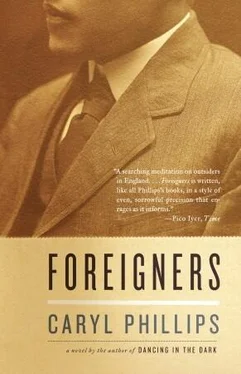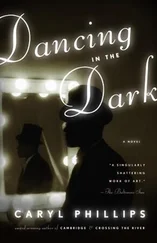And then David just disappeared and that was that. At first nobody thought it was unusual, for we were used to people leaving or just moving on. But after a while I remember asking people, 'Has anybody seen David?' And then I was told, 'Didn't you hear? He's been arrested.' A lot of my own work with the Chapeltown Commonwealth Citizens Committee involved having to deal with the police, who were very much in the habit of picking up people just because they were coloured. The word on the street was that one night, while walking home and minding his own business, David had been arrested and he had been sent to Armley jail. I thought okay, this is not good, but I suppose we'll see him when he comes out. But we never did. He just disappeared.
There they stand, majestic, imperious, brooded over by the gigantic water-tower and chimney combined, rising unmistakable and daunting out of the countryside, the asylums which our forefathers built with such solidity.
The Rt Hon. J. Enoch Powell, Minister of Health, 1961
You can see it from the road; a large Gothic building and a sprawling estate of outbuildings. Built in 1888, this is a deeply depressing complex. The West Riding Pauper Lunatic Asylum; a place of grim, Victorian nightmares set in 200 acres of land. Once you turn off the road, and pass the sign that reads 'Treatment Centre', the gloom deepens. Another sign reads 'Welcome to High Royds Hospital'. The asylum. Thereafter, the sheer scale of the place soon becomes apparent. The buildings begin to multiply and it is clear that High Royds Hospital (as it became known in 1963) is the size of a village. In its heyday over 2,000 people could be 'treated' at any one time in the dark stone buildings which huddle together beneath the sinister turrets and towers. Lights are burning in the windows but there is nobody in sight. Imagine. Inside. Dirty rooms with plastic armchairs and filthy carpets. Walls and windows stained with years of nicotine, burn marks on the floor, ashtrays overflowing with crushed fag ends. Inside ex-patients sleep in the corridors for they have nowhere else to go. Some wear daisies in their hair and bluebells for earrings. (My friend, you spent eight years from 1953 to 1961 in this asylum. Doing what? What were they doing to you? Were there any others like you?) The main building resembles a large stately home. Above it there is a clock tower which, somewhat cruelly, serves only to remind you that in this place time no longer matters. Your time has been taken away from you. Farewell time. ( What were they doing to you? Were there any others like you?) Inside the front door one tiled corridor leads into another. One wing quickly gives way to another wing. A crazed maze. Neither dignity nor privacy. Eating with spoons. Male and female wander abroad. Through a double door there is a huge ballroom with a mirrorball nestled high in the ceiling. On Monday nights, the cinema. On Friday evenings, between seven and nine, the weekly dance. Male and female mixing. Just after Christmas the Annual Asylum Ball. The social event of the season. On New Year's Eve, the patients' Fancy Dress Ball, where the staff present a music-hall-style pantomime, and the asylum band play on and on. (Did you dance, David? Or did they simply sedate you into submission?) Beyond the immaculate lawns, and through the trees, one can glimpse the small Yorkshire village of Menston. Civilisation. In the grounds a truck trundles into view. The driveway curves around the bend. Deliveries? Of food maybe, or perhaps towels? Or medicine? Or needles? Or straps? Cruelly sedated and now ready for electro-convulsive therapy. One man remembered. 'It was like going to the gas chamber, you walked in and saw this horrendous cap that they put on your head and this bed that they asked you to lie on and the injection, to this day I can taste and smell it, and that was to me horrific.' (Did they sedate you into submission?) The tranquil picture must not be disturbed. Cruelly sedated. Perhaps the screams of the patients are too high-pitched for the human ear? (What, my friend, were you doing here for eight years? Really, were there others like you?)
The growth of the woollen industry, and the development of cloth manufacturing, meant that despite occasional visitations from the bubonic plague Leeds continued to expand. By the early seventeenth century, buildings now lined both sides of the River Aire and the town's leading citizens were vociferously complaining of overcrowding. In fact, according to contemporary reports, Leeds Parish Church could no longer accommodate the hordes of people who 'resorted thither every Sabbath'. This expansion was somewhat checked by the Civil War, during which Leeds was idly batted forward and backward by the Royalist and Parliamentary armies; growth was also interrupted by a particularly violent mid-century outbreak of bubonic plague that swept away a fifth of the town's population. However, by 1660, with the monarchy restored, and a new charter granted to the town, which included permission to appoint a lord mayor, things were once again looking buoyant for Leeds.
In 1700 the population was 7,000, with another 3,000 in outlying townships. In the same year, the opening of the Aire-Calder Navigation Canal allowed cloth to be transported by barge out of Leeds and directly to the port of Hull, and thereafter to London or to the large markets of Europe. As Leeds began to develop a direct relationship to the world, her sense of her own importance deepened accordingly. Around 1720, Daniel Defoe visited Leeds and described it as 'a large, wealthy and populous town, it stands on the North Bank of the River Aire, or rather on both sides of the river, for there is a large suburb on the South Side of the River, and the whole is joined by a stately and prodigiously strong Stone Bridge. . [T]he High-Street, beginning from the Bridge and running up North. . is a large, broad, fair and well-built street. . the town of Leeds is very large, and. . there are an abundance of wealthy merchants in it.' At the time of Defoe's visit the banks of the River Aire were already full of warehouses and mills, and the main street of Briggate held a twice-weekly market where everything from the town's famous cloth to pigs or fruits, vegetables or shoes, might be bought.
The Industrial Revolution of the eighteenth century transformed Agrarian England into Industrial England, and even greater wealth began to be accumulated by the upper classes of society. These social changes saw the poorest of Leeds' citizens became poorer, while the richest became increasingly accustomed to, and smugly proud of, their material assets. In 1760, John Colliar, a schoolmaster from the neighbouring county of Lancashire, compared Leeds to 'a cunning but wealthy, thriving farmer. Its merchants hunt worldly wealth, as eager as dogs pursue the hare; they have in general the pride and haughtiness of Spanish dons. . the strong desire they have for yellow dirt (gold), transforms them into galley-slaves, and their servants are doubly so; the first being fastened with golden, but the latter with iron chains.' With a link to Hull in the east already established, work began on the construction of a canal that would link Leeds with Liverpool to the west, and thereby provide opportunities for exporting directly into the new markets of the Americas. Although it took until 1816 to complete, the Leeds-Liverpool Canal placed Leeds at the hub of an extensive water-borne transportation network. With rail transportation having been introduced, and the town's roads being continually improved, Leeds began to develop a reputation for ease of communication, and she was able to move her cloth swiftly both nationally and internationally.
In the eighteenth century, larger and more impressive cloth halls began to be constructed in Leeds. Public libraries, reading and assembly rooms, concert halls and theatres were also built to cater to the wealthier classes, while the working people continued to live in squalor and entertain themselves with bull-baiting, cockfighting, bareknuckle fist fights, or drinking and variety entertainment. Working-class standards of health declined, and living conditions for the poor deteriorated; inevitably, the disparity between those who had and those who had not grew ever wider. By the end of the eighteenth century this town of 30,000 people, with a further 23,000 in the outlying townships, had already developed the practice of establishing a soup kitchen for the indigent, and handing out blankets to those who could not provide for themselves. Fines levied for drunkenness and other abuses were used to help the needy, and food which was 'sold light in weight' was confiscated and given to the poor. This charity was motivated as much by goodwill as by a general fear of civil insurrection and disease.
Читать дальше











![Unknown - [Carly Phillips] The Bachelor (The Chandler Brothe(Bookos.org) (1)](/books/174132/unknown-carly-phillips-the-bachelor-the-chandle-thumb.webp)
